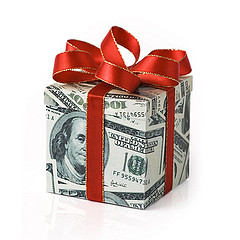 Stable, dividend-paying industries such as utilities and consumer staples have been solid performers in recent years as income investors turned to stocks in search of yield in this low-rate environment.
Stable, dividend-paying industries such as utilities and consumer staples have been solid performers in recent years as income investors turned to stocks in search of yield in this low-rate environment.
The financial crisis has also made equity-based dividend investing more popular as investors focus on potentially lowering volatility and downside protection.
But traditional safety and dividend sectors have been under pressure the past few months amid a move higher in interest rates and speculation the Federal Reserve will begin tapering its bond purchases. For example, yields on the 10-year Treasury note jumped from under 1.7% in May to about 3% before cooling a bit. Higher interest rates can hamper dividend stocks because they end up competing with both bonds and growth stocks, says Morningstar fund analyst Abby Woodham.
Yet Seaver Wang, president and chief investment officer at Karagosian Financial Services, says dividends could continue to be a part of income investors’ portfolios even if interest rates continue to rise. Wang manages the Low Beta portfolio on Covestor, a strategy favoring stocks with strong dividend yields and low valuations.
“A rising rate environment isn’t necessarily a bad thing for dividend stocks,” Wang said. “Yes, when rates rise, higher-dividend stocks will initially be more affected. But we’re starting from a very low base in terms of rates, and as long as the rise isn’t too abrupt and the 10-year yield stays under about 5%, it shouldn’t impede economic growth.”
S&P 500 companies have paid out a record $300 billion of dividends the past year and the U.S. blue-chip index is currently yielding about 2%.
The percentage of personal income represented by dividend income has been increasing in recent years. In 2012, dividend income was 5.64% of per capita personal income in the U.S., compared with 4.39% the previous 10 years and 3.51% 20 years prior, according to S&P Dow Jones Indices. Since 1926, dividends have represented 34% of the monthly total return of the S&P 500, although the level of their contribution has fluctuated over the decades.
Companies have cleaned up their balance sheets after the financial crisis and are returning more capital to investors via buybacks and dividends.
Wang notes that some companies are announcing big dividend increases. Abbott Laboratories (NYSE: ABT), a holding in Low Beta portfolio, last week boosted its dividend by 57%.
The portfolio manager typically holds between 10 and 25 stocks in the strategy, with a focus on securities that have shown less volatility than the S&P 500. His “bottom-up” approach means Low Beta portfolio won’t necessarily focus on the traditional dividend-paying sectors such as utilities.
Wang initially screens for stocks that are less volatile that the S&P 500 and then looks for companies with a history of above-average dividend yields, low price-to-earnings ratios and low debt-to-equity ratios.
He tends to avoid popular, high-volatility stocks that may not reward investors for the risk.
“A lot of these well-liked stocks suffer from the winner’s curse,” Wang said. “People like to invest in stocks after something runs up, so they end up buying high and selling low. High-beta stocks can do well, but they can also lose a lot. Our strategy is to win by not losing.”
Photo Credit: SalFalko
DISCLAIMER: The investments discussed are held in client accounts as of September 30, 2013. These investments may or may not be currently held in client accounts. The information in this material is not intended to be personalized financial advice and should not be solely relied on for making financial decisions. All investments involve risk, the amount of which may vary significantly. Investors cannot invest directly in an index. Indexes have no fees. Past performance does not guarantee future results.



